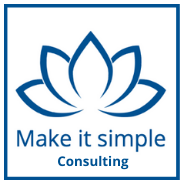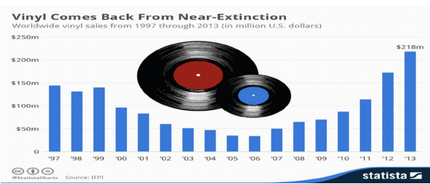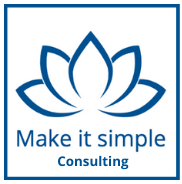Leading in the VUCA World
A Make it Simple® White Paper
September 2020
Volatility… Or the increasing rate of change…
Things change continuously. What is true today isn’t true tomorrow. Even the nature
and dynamics of change will change.
Products that are blockbusters today might be worthless in less than a year’s time. Blackberry, for example, collapsed in two years’ time after the launch of the iPhone 4. Or take the banking industry, with negative interest rates coming from nowhere. This previously unthinkable situation completely changed some of the fundamental business models of that industry.
Uncertainty… Or less clarity about the future…
More than ever, we live with a lack of predictability and a prospect for surprise. It is almost impossible to predict how markets will evolve.
Vinyl records were supposed to be dead a long time ago but are suddenly reborn.
Fixed values in the stock exchange can collapse overnight… and because of globalization a relatively small change can have huge worldwide consequences. The butterfly effect.
Think of how one bank, Lehman Brothers, almost crashed the world economy in 2008. Yes, we can explain all these events after the fact, but very few experts predicted them.
What is the next global uncertainty butterfly effect?
Who can predict what will come next with the Covid19 or if Google will get into the Health Care Business and when?
Complexity… Or the multiplicity of decision factors…
Simple cause & effect chains have been replaced by complex interconnected forces & events.
Interconnectedness is the engine of complexity.
Take our phones or TVs, which were simply connected with a wire to an antenna or the phone network. Today it is far more complex, with setup-boxes, routers, WIFI connections and Clouding systems with multi-city screen access and interconnection.
Or take the advertising business: in the past the advertiser bought advertising space in printed media, on radio or TV and reached his targeted audience.
Today’s programmatic advertising is a labyrinth of complex bidding systems to get the right advertisement, to the right person, on the right screen and in real time!!!
In 2016 RTB became the mainstream!
How do we manage supply chains with globalization, high-speed telecommunications links, new technologies and regulatory requirements changes coming at the same time?
How do we manage until the time we have a vaccine for the Covid19, not knowing when it will come and if it will be efficient?
Ambiguity… Or the fact that there may be no “right answer”
Is milk good or bad for you? What’s the real cost of nuclear energy versus wind energy?
Is Covid19 contamination being accelerate by children and should we be re-confined?
You can easily find very convincing but totally contradictory information for any position.
What is it telling us: Old certainties are highly challenged and because of complexity and unpredictability, many leaders avoid taking positions!
Is Donald Trump in favour or against raising minimum wages? He might be a champion
of ambiguity, but we can see similar vagueness in many organizations today.
How do we manage that "we don't know what we don't know?"
How do we Lead in this VUCA World?
First, we have to realize that we have been trained since school to resolve problem jumping right away into finding solution without trying to know or understand what the problem is, what are we asked to solve. Many times, we project ourselves in the future to immediately find solution without really questioning what the problem is, in which way it is a problem, what are the impacts of this problem, and for whom it is a problem!
Sometimes, because of the complexity of the situation we and our Teams we have no idea about how to solve a problem. the real problem or problems and we will focus “here” and “now”. And our challenge becomes to be able to move from Problem Mapping to Problem Solving with a disruptive way to avoid we continue to have the same kind of solution that haven’t allow us until now to resolve the problems. We just know that if continue to adopt the classical solutions we have apply until now, we are going to continue to have the same kind of solution.
How do we lead our teams to stated problem differently, to find formulation that will open the fields of possibilities differently and get much more into innovative way?
How can we activate Team’s collective intelligence to enrich an idea and get to a new product or a new service in a very efficient and quick manner?
Finally, we have to accept that our traditional way of making decision doesn’t work in this VUCA world and that we are very often lost in the decision-making process, confusing between “clarification questions”, “opinion”, and “objection” and it is driving us to debate and over complexify the decision process. How do we ensure we protect the decision-making process from “political games” or sterile debate that definitively impact the implementation of innovation saving time and helping the Team to be aligned without seeking for consensus, compromise or full agreement?
But there is good news. It is possible to thrive and prosper in a VUCA environment. Yes, it is not easy, and it requires a “Plan”, but it can be done.
The experiences shown us that there are “know how” and it is just a question of the willingness of Top Management to make it happen, developing themselves and their Leaders to Lead in a VUCA World.
No surprise, “Leading in a VUCA World” starts with a mindset: being and staying positive in the Transformation. This means we must keep in mind that “It is what it is”, that we must trust that People act with good intention and that we have to see the change as an opportunity. In addition, we have to believe that “it is not over until it is over”, and we have to be courageous, to take ownership and help people to be successful. We have to have a mind-set that drive us to be part of the solution not the problem.
This Agile Leadership mindset is built around four preferences:
• “People & interactions” over processes & tools :
Let’s be sure Processes are here to serve People and not People serving Processes…
• "Useful deliverables” over comprehensive documentation:
Driving the Team to focus on “doing” more than “documenting” what need to be done, aligning on what have to be delivered more than what have to be done, questioning what will respond to “customers” need, avoiding to work on a useless deliverable.
• “customer collaboration” over contract negotiation
With a contract we are much more focusing on “what if.” What if it is not working? How do we manage the consequences? This is complicated by the fact that we are focusing on the future and often on very distant future.
Who knows what will happen two years from now? Today Covid19 crisis driving us to question what will happen in two weeks or two months.
Including the customer directly into what we do forces us to be “here and there.”
• “responding to change” over sticking to the Plan
Here again, by definition a “Plan” is about projecting ourselves into the future, the unknown and so let’s be sure we are responding to change and challenge the Plan.
It is definitively a question of mindset as well as a question of skills and a “Way of Working” that generates a “New Way of Leading”.
Business models, strategies and organization models will continue to change, and leaders will have to let go of even more control and give the power to the People to act, to empower them!
Researchers are telling us that in our VUCA world People and Organizations are expecting a new Leadership dimension. Based on more than 100 Leadership Interviews conducted by Make it Simple Consulting® between September and December 2019, there are evidences that Agile Leadership is what will help companies to deal and prosper in the VUCA world.
• The ability to “pitch” a Vision over developing very detail and documented strategies :
To create a sense of purpose, to help people understand “who we want to be,” “where do we want to go” and “how will we go there together”
• Mastering People Skills to Understand and engaged People :
o Questioning and Listening skills to coach People, Teams and Organization
o Being in the field (GEMBA Leadership) over having an “open door policy”
o Building on People diversity and create a “Psychological safety” environment
• Create, develop and drive a high level of Collaboration within the Teams
Building an environment where People are encouraged to:
o Participate actively (and let other participate actively – respecting others)
o Defer judgment (other ideas – others – your own idea – yourself)
o Encourage wild ideas (to avoid we reproduce existing solutions)
o Build on others’ ideas (great innovation come from combining several ideas)
o Challenge certainties (certainties are only valid for a time and context)
• And to lead with Agility to activate Collective Intelligence and Collaboration
Agility being about “iteration” – “interdependency” – “autonomy” and “Ownership”
o Fast « iteration » from exploration to structuration, iteration from ideas to deliverable, iteration from individual work to collaboration and iteration from « collaborate » to « deliver » to « reflect » and to « improve »
o Strong « interdependency » within the team and between the team members.
We need each other to perform!
o Generating autonomy. Autonomy coming from delegation. Autonomy to engage, to take action and to make your own decisions respecting interdependency and the Grants of Authority.
o and finally creating « Ownership ».
Giving the opportunity to People to make it happen as if it were their own.
It is about, stop talking about it and start acting because People believe it is good for the project, for the team and for the company!!
In conclusion our Leadership challenge is to ensure, in this VUCA World, that we continue to fulfill our major Leadership responsibilities, which are primarily to ensure our People have a « yes we can » mindset and attitude as well as ensuring our People « do it together ».
Our experiences drive us to say that Leaders will only be able to operate in a VUCA World if they use a different way of working and a new way of leading that requires the ability to think and act differently, the Agile Leadership Way.
Tanguy Deglise
Founder of Make it Simple Consulting®










